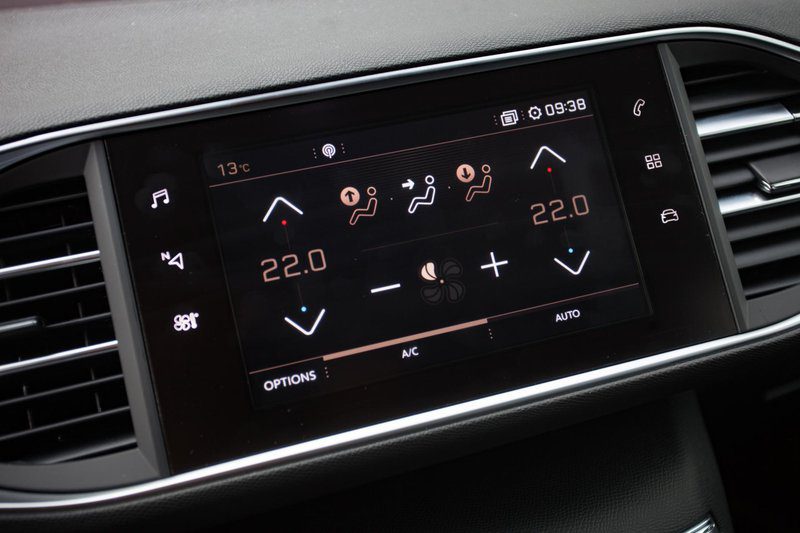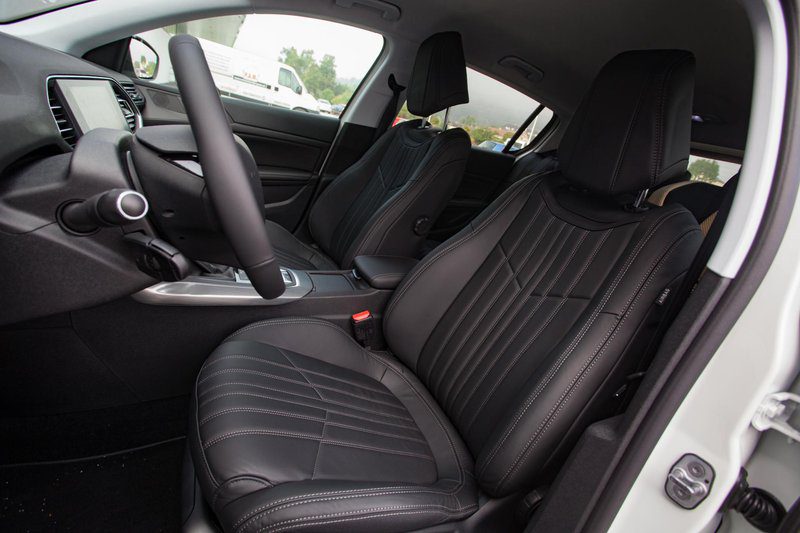
Extended test: PEUGEOT 308 Allure 1.2 PureTech 130 EAT
Not all of his characters may appeal to all drivers. This is, for example, the driver's workplace, which Peugeot calls the i-Cockpit, and since it was introduced in Peugeot 2012 in 208, it has brought about significant changes for drivers. Whereas in all other cars we look at the sensors through the steering wheel, in Peugeot we do this by looking at the sensors above it.

Some people like this layout, while others, unfortunately, cannot get used to it, but the Peugeot 308 is arranged quite well, since the speedometers and revs are very far from each other, so they can be clearly seen next to the steering wheel, which also became smaller and, primarily more angular. Due to the pressure gauge located above it, it is also quite low. This change may seem rather unusual at first, but once you get used to it, turning the steering wheel "in your lap" becomes even easier than in the classic layout, when the steering wheel is higher.
With the introduction of the i-Cockpit, Peugeot has transferred control of all functions, including air conditioning settings, to a central touchscreen. While this contributed to the smoother shape of the dashboard, we unfortunately found that such controls can be quite distracting for the driver while driving. Obviously, this was also found in Peugeot, since with the second generation i-Cockpit first introduced in the Peugeot 3008, at least switching between functions has again been assigned to conventional switches. However, with the change of generation, Peugeot engineers have also improved the infotainment system in the Peugeot 308, which they have agreed with their competitors, especially when it comes to streaming content from mobile phones. With the generation change, the Peugeot 308 did not receive the digital dashboard option offered by the newer Peugeot 3008 and 5008, but unfortunately its electronic guts do not yet allow this, so the possibility of creating a more digital interior will have to wait. until the next generation.

When they get used to the low steering wheel and the gauges above it, the tallest drivers find a suitable position as well, and despite the car's mid-wheelbase, there is plenty of room for the passenger and backseat passengers. It will also be important for fathers and mothers that the Isofix attachments are relatively easy to access and that there is enough space in the trunk.
The combination of a 308-horsepower 130-liter turbocharged petrol engine and a six-speed automatic transmission Aisin with a torque converter (older generation) gave a special character to the test of the Peugeot 1,2, which caused fears among many colleagues that the car would use too much fuel. This proved to be useless, as the average consumption ranged from a favorable seven liters per 100 kilometers, and with the careful addition of gasoline, it could be reduced even below six liters. In addition, the Peugeot 308 motorized in this way turned out to be a rather lively car, and we were pleased with the automatic transmission, especially during rush hour, when we did not have to constantly press the clutch pedal and change gears in the crowd of Ljubljana.

This combination of engine and transmission, which more than sportily matches the desire for comfortable driving after daily tasks, also matches a chassis that will not satisfy sports fans with its neutrality, but everyone else will like it because of its strong tendency. for driving comfort.
Thus, we can summarize that the Peugeot 308 deservedly won the title of European Car of the Year in 2014, and after being refurbished, it also successfully passed the “maturity test”.
Read more:
Extended test: Peugeot 308 Allure 1.2 PureTech 130 EAT6
Grille test: Peugeot 308 SW 1.6 BlueHDi 120 EAT6 Allure
Extended test: Peugeot 308 - 1.2 PureTech 130 Allure
Test: Peugeot 308 – Allure 1.2 PureTech 130 EAT6
Extended test: Peugeot 308 Allure 1.2 PureTech 130
Grille test: Peugeot 308 SW Allure 1.6 BlueHDi 120 EAT6 Stop & Start Euro 6
Peugeot 308 GTi 1.6 e-THP 270 Stop-start

Peugeot 308 Allure 1.2 PureTech 130 EAT6
Basic data
| Base model price: | 20.390 € |
|---|---|
| Test model cost: | 20.041 € |
Costs (per year)
Technical information
| engine: | 3-cylinder - 4-stroke - in-line - turbocharged petrol - displacement 1.199 cm3 - maximum power 96 kW (130 hp) at 5.500 rpm - maximum torque 230 Nm at 1.750 rpm |
|---|---|
| Energy transfer: | the engine is driven by the front wheels - 6-speed automatic transmission |
| Capacity: | top speed 200 km/h - 0-100 km/h acceleration 9,8 s - average combined fuel consumption (ECE) 5,2 l/100 km, CO2 emissions 119 g/km |
| Mass: | empty vehicle 1.150 kg - permissible total weight 1.770 kg |
| External dimensions: | length 4.253 mm - width 1.804 mm - height 1.457 mm - wheelbase 2.620 mm - fuel tank 53 l |
| Box: | 470-1.309 l |
